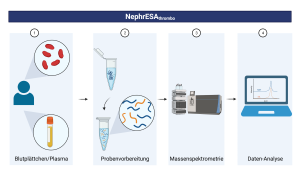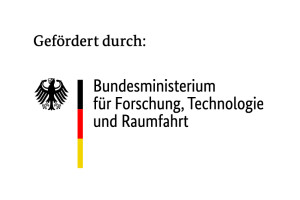The number of people suffering from chronic kidney disease (CKD) is steadily increasing. More than ten percent of the German population – around 8.3 million people – are affected by CKD. In many patients, restricted kidney function leads to lack of blood. This renal anaemia happens when less erythropoietin (EPO), the hormone responsible for the formation of red blood cells (erythrocytes), is produced. In those affected by CKD, this also leads to inflammation and iron deficiencies. Until now, patients have been treated with EPO or other so-called erythropoietin-stimulating agents (ESA). The problem is that administering this medication to persons with advanced CKD carries a high risk of thrombosis, heart attack or stroke. Whether or not the therapy is successful greatly depends on individual patient-related factors.
Objective: more effective treatment of anaemia based on the individual needs of the patient
In order to treat anaemia more effectively, researchers in the »NephrESA« project are developing a computer model which can be used to determine the risks and prognoses of the medication for each individual affected. Equipped with this knowledge, the aim is to achieve a personalised and, ultimately, an improved treatment of anaemia in patients with kidney disease. To optimise the administration and dosage of medication containing EPO and be able to adapt it more effectively to the individual needs of the patient in the future, the scientists, amongst them members of the Proteomics research group at ISAS, are for example initially investigating the complexity of the reciprocal effects, inflammation processes, changes in the regulation of the iron metabolism and also the risk of thrombosis in persons affected by CKD. This knowledge is subsequently to be incorporated into mathematical models which enable physicians to make predictions about treatment which are resilient and tailored to individual anaemia patients.
Search for markers for early activation of blood coagulation
Subproject 4 at ISAS concerns the molecular mechanism that ensures an imbalance of thrombocytes in CKD patients, into which no research has been conducted until now. The researchers use mass spectrometry to examine the blood plasma and thrombocytes of CKD patients in order to identify markers for early activation of the blood coagulation.

From test system to computer model: In subproject 4 at NephrESA, researchers at ISAS are pursuing four main objectives.
© ISAS
Main objectives at one glance
Development of assays for investigating the blood plasma risk factors in thrombovascular events (concerning blood platelets and vessels).
Development of assays for the activation status of thrombocytes in CDK patients.
Analysis of changes in the dynamics of thrombocyte activation in CKD patients.
Development of a computer model (NephrESAthrombo submodel) of the thrombovascular risk for CKD patients.
Share
Select publications
International Journal of Molecular Sciences, Vol. 22, No. 9, 2021
Shevchuk O, Begonja AJ, Gambaryan S, Totzeck M, Rassaf T, Huber TB, Greinacher A, Renne T, Sickmann A.
Proteomics: A Tool to Study Platelet Function
https://doi.org/10.3390/ijms22094776
